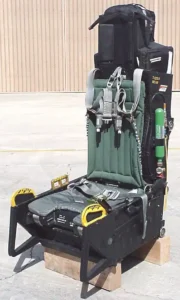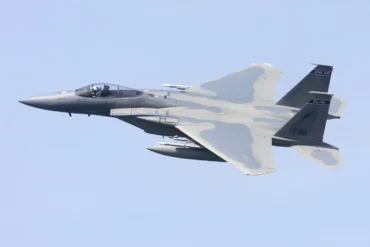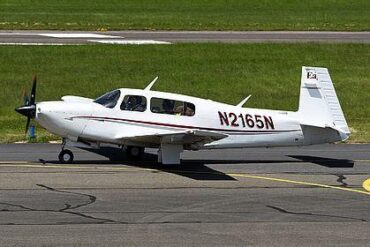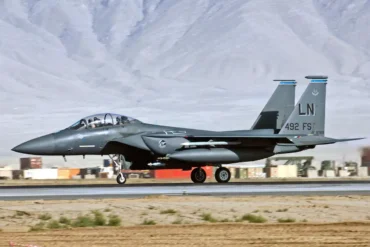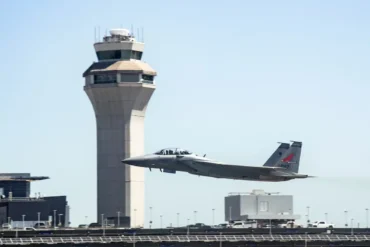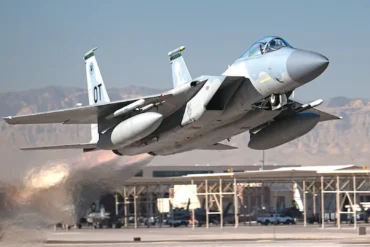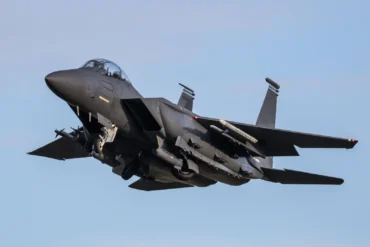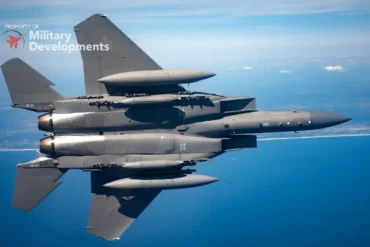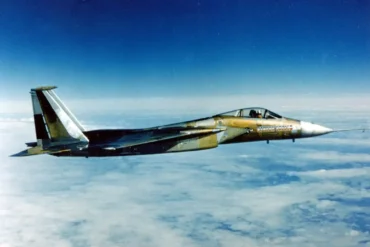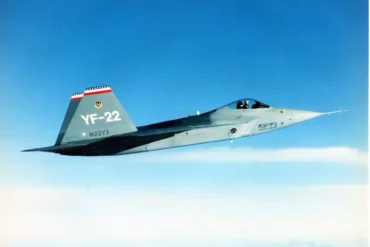The F-15 Eagle is one of the most iconic air superiority fighters in the world, known for its advanced capabilities, exceptional maneuverability, and high-speed combat performance. However, behind its impressive operational prowess lies a crucial yet often overlooked component: the ejection seat. Specifically, the ACES II ejection seat fitted in the F-15 is a cutting-edge piece of safety technology that ensures pilots and aircrew can eject safely in the event of an emergency. This article delves deep into the F-15 Eagle ejection seat, exploring its design, functionality, and unique features that make it indispensable for aircrew safety.
The Role of the Ejection Seat in the F-15 Eagle
The F-15 Eagle is designed for air superiority, with the primary goal of establishing and maintaining dominance in the skies. This role requires the aircraft to engage in high-speed, high-altitude maneuvers, sometimes at the edge of operational limits. In these extreme conditions, the ability to quickly and safely eject from the aircraft is critical for the survival of the pilot and crew. The ACES II ejection seat is engineered to provide this vital functionality, combining state-of-the-art technology with careful design to ensure ejection under the most demanding scenarios.
The ACES II ejection seat is an advanced system used across several U.S. military aircraft, including the F-15 Eagle. This seat is designed to save lives during emergencies by safely propelling the occupant out of the aircraft in the event of an ejection. The seat is triggered by a sequence of events initiated by pulling a handle or lever, which detonates a rocket or gas cartridge to propel the seat away from the aircraft.
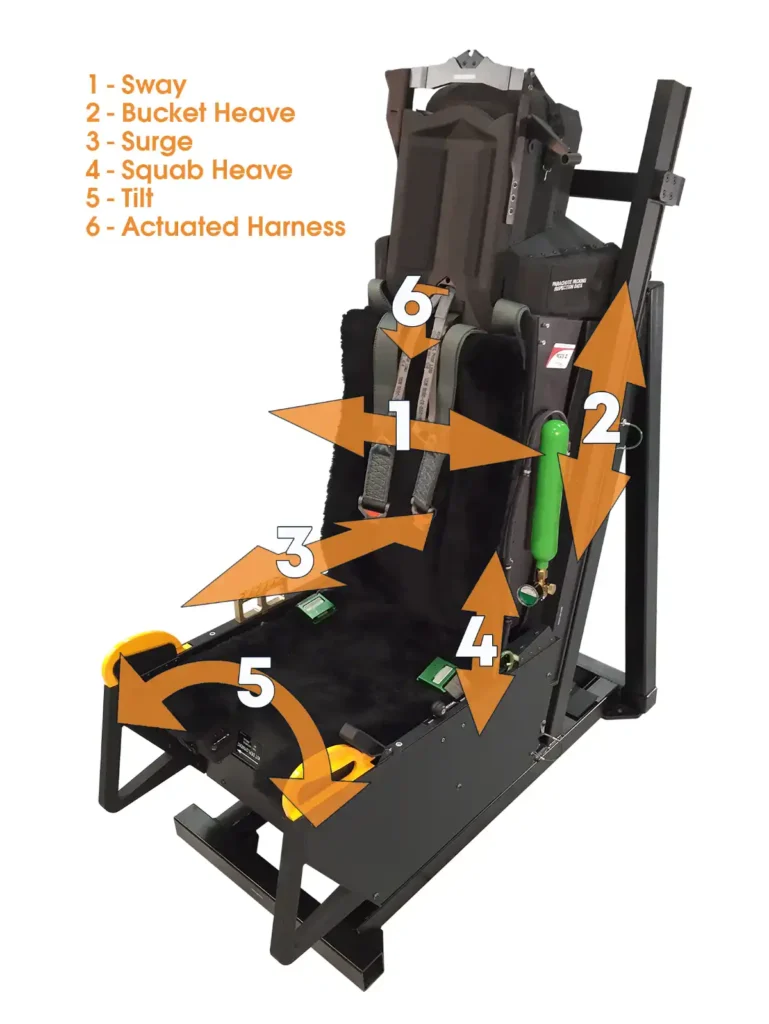
The Mechanics of the ACES II Ejection Seat
The ACES II ejection seat in the F-15 Eagle is a well-engineered device, capable of operating in a variety of emergency situations. The basic operation of the seat involves several crucial steps:
- Activation: The pilot or crew member initiates the ejection process by pulling the ejection handle, which starts the sequence of events. In the F-15, the ejection handle is designed to be easily accessible and operable, even during high-stress situations.
- Seat Detachment: Upon activation, a series of powerful charges fire, detaching the seat from its position within the cockpit. The rocket or gas cartridge used to propel the seat ensures it leaves the aircraft at high speed, enabling the occupant to clear the aircraft structure in a timely manner.
- Canopy Jettison: In parallel with the ejection process, the F-15 Eagle’s canopy is jettisoned, clearing the way for the seat and allowing the crew member to exit the aircraft. The ACES II features specialized canopy breakers, which aid in the rapid removal of the canopy during ejection.
- Parachute Deployment: Once the seat has cleared the aircraft, a parachute deploys to slow the descent of the occupant. This ensures a safe landing after the ejection.
- Survival Equipment: The ejection seat is equipped with essential survival gear, such as a life raft and emergency beacon, which aid in the crew member’s survival after landing in hostile or remote environments.
Detailed Features of the F-15 Eagle’s ACES II Ejection Seat
The ACES II ejection seat in the F-15 Eagle is not just a simple device for ejection; it incorporates various features that enhance its safety and effectiveness. These features reflect the evolution of ejection seat technology and the need for a highly reliable system capable of operating under the most extreme conditions.
1. Canopy Breakers and Seat Design
The F-15 Eagle ACES II ejection seat is distinct from other variants due to its canopy breakers, which are located at the top of the seat. These breakers help to rapidly shatter the cockpit canopy in a way that maximizes the chances of a quick and successful ejection. The seat has specialized breakers for both the pilot and the weapon systems officer (WSO) positions, ensuring that both crew members can eject safely, even if the canopy doesn’t jettison immediately.
2. Shoulder Harnesses and Seat Height Adjustments
The F-15 Eagle ACES II features shoulder harnesses that are equipped with specialized SEAWARS buckles. These buckles provide an added layer of security, ensuring that the occupant is properly restrained during the ejection process. Additionally, the seat incorporates powered seat-height adjustments, allowing for a custom fit for different crew members, further optimizing comfort and safety during ejection.
3. Full Motion Cueing System and Simulation Capabilities
An advanced feature of the F-15 ejection seat is the integration of motion cueing systems designed for training simulators. The ACES II ejection seat in simulators, such as the F-15 Dynamic Motion Seat (DMS) by ACME, provides realistic motion cues that mimic the actual experience of ejection. This level of realism is essential for training, as it allows aircrew to practice emergency procedures under realistic conditions.
The DMS system uses electric motors to simulate dynamic movements during ejection, eliminating the need for expensive and maintenance-intensive hydraulic systems. This system also provides feedback on seat lever states and controls, helping instructors track the performance of trainees.
4. Emergency Beacon and Survival Equipment
The ACES II ejection seat is equipped with emergency beacon transponders and rescue kit deployment switches. These elements are vital for survival in remote or hostile environments, as they allow the crew member to signal for rescue after landing. The survival kit is carefully designed to offer the occupant the tools needed for post-ejection survival, including water, rations, and signaling equipment.
5. Built-In Safety Features
The F-15 Eagle’s ACES II ejection seat comes with a variety of built-in safety features to ensure that ejections are executed safely and effectively. These include:
- Weight on seat sensors to ensure the seat does not eject unintentionally.
- Loss of signal sensors to detect if there are issues with the seat’s communication systems.
- Self-monitoring systems that provide real-time diagnostics on the status of the ejection seat.
The Evolution of the ACES II Ejection Seat and Its Importance
The ACES II ejection seat was developed as an evolution of earlier ejection seat technologies, including the Escapac seat used in early F-15A prototypes. The ACES II has been fitted to numerous aircraft in the U.S. fleet, such as the F-15 Eagle, and its design reflects decades of refinement aimed at enhancing safety and operational performance.
The introduction of canopy breakers, which were first incorporated after an incident in which the canopy did not jettison promptly, revolutionized the speed and efficiency of ejections. The ACES II seat’s design ensures that even in extreme emergency situations, aircrew can safely eject and survive.
Training with the F-15 Eagle Ejection Seat
Training with the ACES II ejection seat is critical for ensuring that aircrew can respond quickly and effectively in an emergency. The F-15 Eagle’s ejection seat training systems, such as the Dynamic Motion Seat (DMS), offer invaluable simulation of the actual ejection experience, allowing pilots and crew members to practice procedures without the risk associated with real ejections.
Simulators designed for the F-15 Eagle replicate the exact motion and physical forces of an ejection, enabling aircrew to become familiar with the sequence of events and to refine their reactions. This training enhances preparedness, ensuring that when the time comes, aircrew can eject swiftly and effectively, ensuring their survival.
Conclusion: The Critical Role of the F-15 Eagle Ejection Seat
The F-15 Eagle ejection seat, specifically the ACES II, is a cornerstone of safety in this highly advanced aircraft. With its sophisticated design, unique features, and vital safety mechanisms, the ACES II ejection seat is essential for ensuring that crew members can escape the aircraft in an emergency. Through its continuous evolution, the F-15 Eagle’s ejection seat system has become one of the most reliable and effective safety devices ever created, saving countless lives and ensuring that aircrews can safely eject, even in the most extreme conditions.
